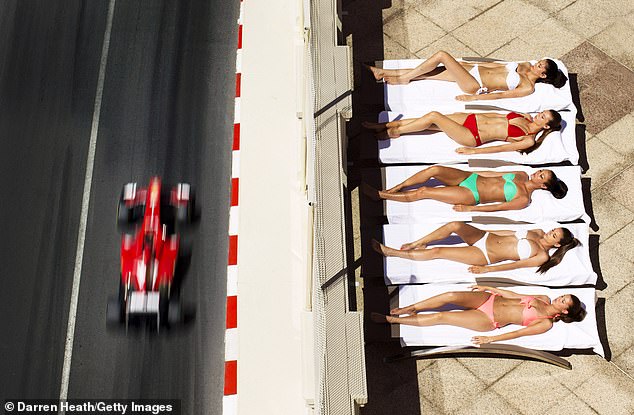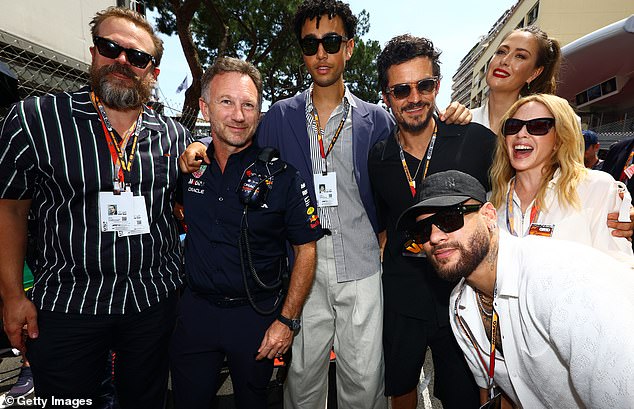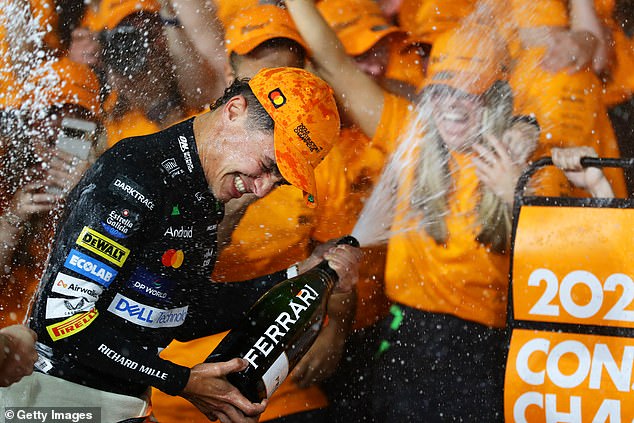If you think that Formula 1 racing is just a handful of short, slim but immensely wealthy young men whizzing round and round in circles like protons in a particle accelerator and then Max Verstappen wins, well… you wouldn’t be far wrong.
But there is so much more to Grand Prix racing as this breezy, hugely enjoyable book by one of the most respected journalists in the F1 press paddock makes vividly clear.
And if you don’t know your cylinder head from a monocoque chassis, don’t worry: this is resolutely not a book for nerds.
You will look in vain for any chat about brake horsepower.
And that is not surprising. The popularity of F1 racing has become turbo charged. No longer are its fans middle-aged white guys burbling about torque.
Now 40 per cent of its fans are women, its audience is massively mixed and multi-racial, and in the fan zones at F1 race tracks are throngs of young people all wanting to have a party. It seems a long, long time since Bernie Ecclestone, the diminutive wheeler-dealer who initially drove the massive expansion of F1, sold out to the US conglomerate Liberty Media in 2017.
It was Ecclestone who once famously asked why he should be bothered to get anyone who couldn’t afford a Rolex interested in F1, because those were the sponsors he wanted. Now of course, sure, the amounts of money involved in costs and salaries are still mind-boggling, but F1’s popularity is booming like never before – thanks not least to the huge appeal of the Netflix series Drive To Survive.
McLaren driver Lando Norris will be fighting for the Championship in 2025

Susie Wolff, once a race driver herself and now married to Mercedes chief Toto, knows that the motor-racing business is dominated by men in almost every sphere
It’s easy to see why a new, younger audience is flocking to F1 – it’s glamorous, it’s exciting and there are a host of younger drivers who they can identify with, like Britain’s Lando Norris.
It’s also inherently risky and a dangerous sport. Though, thanks to a range of safety improvements, the chances of drivers surviving life-threatening accidents have improved immeasurably since the sport’s early days when death was a constant spectre.
Few who saw it can forget the nerve-shredding scenes in the opening lap of the 2020 Bahrain Grand Prix when the French driver Romain Grosjean hit the wall at 120mph and his car split in half. It was immediately engulfed by fire.
After a scarcely believable half a minute, Grosjean climbed out alive, shaken but not injured. He retired from F1, reflecting: ‘What I know, and that is a view I had before my accident, is that life is worth living.’
This season will be one of the biggest ever, the 75th anniversary of F1 which began in May 1950 at a former RAF station near Northampton, called Silverstone.
Another big reason why anticipation for the new season is hitting fever pitch is that the great Sir Lewis Hamilton, the boy from Stevenage who turned himself into the most successful F1 driver in history, is preparing to make his debut in the scarlet of Ferrari.
Not bad for a 40-year-old, even one being paid upwards of $50million a year. Can he seal a record eighth title with the sport’s most famous marque? Probably not, but it will be worth watching.

Redbull Team Principal, Christian Horner with David Harbour, Archie Madekwe, Orlando Bloom, Kylie Minogue, Maria Sharapova and Neymar
Smith’s excellent book is an access-all-areas VIP pass. Full of passion for the sport – the noise, the roar and the speed – he takes us behind the scenes to look at how F1 racing works through the hundreds of people who create it.
There are the team principals, men like Toto Wolff of Mercedes, Christian Horner of Red Bull (who has had his share of coverage on front as well as back pages), or Lawrence Stroll, the burly and somewhat scary Canadian billionaire businessman who runs Aston Martin and whose son Lance drives for him.
Not forgetting the pit crews, the strategists, the PR gurus, the brilliant engineers and technicians who know a misplaced 50p screw could cause a £15million car to break down – and, of course, the fans.
For them there’s no more glamorous Grand Prix than Monaco, though paradoxically it is often the dreariest race. It is almost impossible to overtake now on the tight city streets given the size and width of the modern F1 car. Nelson Piquet once memorably described the Monaco GP as ‘like riding a bicycle round your living room’.
Still, there’s always the presence of the gazillion-pound yachts in the harbour and the stars on the grid to make up for the processional quality of the racing.
Sir Lewis once described the sport as a ‘billionaire boys’ club’, and there’s an element of truth in that, though few drivers can get to the grid on anything but merit. He was certainly not the son of a billionaire, and the almost unimaginably huge rewards Sir Lewis enjoys now would have been inconceivable when he was growing up in his father’s one-bedroom apartment.
Smith’s hugely engaging book is full of fascinating lay-bys too, not least on its environmental impact which, let’s face it, is not inconsiderable. Even more fascinating, who knew that the best croissants in the world are made by a former F1 engineer, an Australian called Kate Reid, who applied her technical skills and motor-racing mindset to the business of baking?
Now her shop, called Lune, employs several hundred and immense queues build up each morning for the precious pastries. The bakery is in Melbourne, which is handy as that is the home of the opening race of the 2025 season on March 16.

Kylie Minogue waves the chequered flag at the Singapore Grand Prix in 2024
One thing you will notice on any F1 grid is that all the drivers are male. The sport though is completely unsegregated: anyone can race. The physical demands for the moment make it more suitable for men, though the number of women who want to race is ever expanding.
Susie Wolff, once a race driver herself and now married to Mercedes chief Toto, knows that the motor-racing business is dominated by men in almost every sphere, whether it’s driving, design or engineering.
She set about helping to change that and a couple of years ago became head of the all-woman racing series, F1 Academy, launched to help put women on the path to joining the sport.
Smith includes a fascinating interview with Susie, and who’s to say that her vision of a more balanced sport won’t work out?
What is certain is that Luke Smith should be on hand to report it. And with a bit of luck, he will include an index next time.
On The Grid by Luke Smith (Simon & Schuster £22, 290pp)
Source link : http://www.bing.com/news/apiclick.aspx?ref=FexRss&aid=&tid=67b94cf5b6284d2f9cbd48edde0ba089&url=https%3A%2F%2Fwww.dailymail.co.uk%2Fhome%2Fbooks%2Farticle-14417841%2FOn-Grid-Luke-Smith-book-sport-formula-1.html&c=15507575247893765607&mkt=de-de
Author :
Publish date : 2025-02-21 06:57:00
Copyright for syndicated content belongs to the linked Source.























































